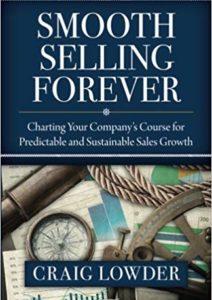When your sales team is operating at peak performance, the company thrives. Sales increase, the company is more profitable, people are engaged, and clients are thrilled enough to keep coming back for more. It almost seems effortless. However, in almost any facet of life, effortless success is rarely effortless. It comes after frameworks are put in place, objectives shared, and hours of hard work.
The metaphor I like to equate to this effortless success involves sailing. Take the America’s Cup race. When everyone on the crew is in tandem, working towards the same goals and everyone playing their role at the exact time needed, the sailboat seems unstoppable. We’ve all heard the phrase, “They make it look so easy.”
Wouldn’t you like your sales team to operate that way? Everyone working together towards the same goals and making success seem easy? You can and it starts with organizing your sales team the right way to give them the tools, training, and motivation to succeed.
Here are eight effective ways to organize your sales team to ensure smooth selling.
1. Structure/Organizational Design
Your sales team needs to be set-up for success. This begins with a five-step territory design approach. Your sales people can focus their efforts and you can avoid competition amongst your team by clearly defining a target area for each member. To do so, you need to:
- Analyze the Potential of Each Territory
- Rank Sales People
- Map Prospects and Customers to Territories
- Produce Territories
- Review Territory Map
2. Defined Roles and Responsibilities
What do your sales people expect from you? Are you clear on what you expect of them? Conversations about expectations don’t count if that is all you do. Expectations need to be in writing. List responsibilities, authority, and performance metrics. Give your people a clear target as well as the tools, training and resources to succeed.
3. Staffing and Hiring Plans
Arguably nothing is more important than getting the right people on the team. When you talk about finding the right person, you are talking about the right person for the right job. Make sure that you have a documented staffing plan and hiring process … and follow-it.
Not every person on the sales team needs to perform the same function. Lead generation, education, nurturing, closing, and customer service are all important steps in any sales process. Define your sales process, the roles needed to achieve each step, and the characteristics of the people to excel at these roles. Put the right people in each of these roles.
Note: There are other benefits to defining your sales process. Top sales candidates are wooed by many companies throughout their career. While a company is screening candidates, candidates are likewise screening companies. How a company handles the process sends important clues on what it will be like to work there. A process that is less than top notch is a hindrance to attracting top talent.
4. Personnel Assessment
An annual performance review forces a manager to sit down and evaluate the performance of each member of the sales team. This is the time to evaluate past performance and set goals for the following year. Then progress should be tracked and discussed minimally on a quarterly basis if not monthly and/or weekly. This also lays the foundation for performance improvement and, if necessary, termination.
An individual’s performance on each of their key performance measures and his or her overall job performance should be evaluated on the basis of the following ratings:
5 – Exceptional Performance. Performance consistently and significantly exceeds expectations and requirements of the job.
4 – Exceeds Expectations. Performance exceeds requirements in a number of key areas.
3 – Meets Expectations. Performance is solid, meets required standards and expectations, and is what is expected of a fully competent and qualified person in the position.
2 – Improvement Needed. Performance is slightly below acceptable levels, occasionally fails to meet the minimum standards of job performance, or is poor/inconsistent.
1 – Unsatisfactory. Performance does not meet expectations and is unacceptable.
Being clear about goals and expectations makes for smoother selling.
5. Sales Training Programs
Let’s bring back the sailing race analogy. Why does a successful America’s Cup team train and train and train? The crew knows how to sail. Each team member is one of the best in the world. And yet, they practice over and over again. Why? The answer is obvious and makes a good analogy. Because the race is so important they want to be as prepared as possible to win. Experienced skippers know too that crews require regular coaching to reach top performance.
Likewise, much is at stake when a sales rep is in front of the prospect or the customer. To achieve top sales performance it is imperative to engage in ongoing coaching.
6. Leadership Development
In America’s Cup racing, just because someone is a great sailor does not necessarily mean that they will make a great skipper. This is similar to the sales adage that “A great sales person doesn’t always a great sales leader make.” Sales leaders are made, not born. In other words, no one is perfect and all must be developed. School is never out for the sales leader; there is always something new to be learned and improved upon. When you evaluate your people and organize your sales team, identify who has the right skill set to become the best leader of the team. Then provide the leadership development training they need to be an effective skipper.
7. Sales Leader Recruitment
The quality of your sales leader recruitment process will help get the best leader for your sales team. Getting this one process right will allow you to recruit sales people and leaders inside or outside of your industry. Spend some time evaluating best practices in recruitment, the skills needed for each leadership position, and how best to identify and evaluate those skills in interviews.
8. Compensation
There is a great adage in sales: “What gets rewarded gets done.” Effective sales compensation plans include rewards for both activity and results. Make sure your compensation plan is actually motivating and rewarding the results you want. Tie it back to goals. Compensation plans should formally be reviewed at least annually to ensure the plan is driving the desired sales behavior.
For more tips on how to implement smooth selling techniques at your company check out my book.
Smooth Selling Forever enables small and mid-size business leaders to generate significant, predictable, and sustainable sales growth. Based in the science of selling, when applied correctly and managed vigilantly, smooth selling produces revenue results in a systematic fashion.
Pipeliner CRM empowers sales teams to organize effectively for maximum sales.Get your free trial of Pipeliner CRM now.












Comments